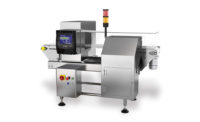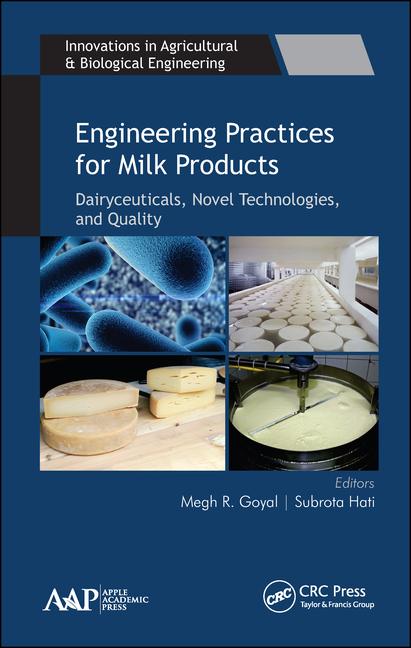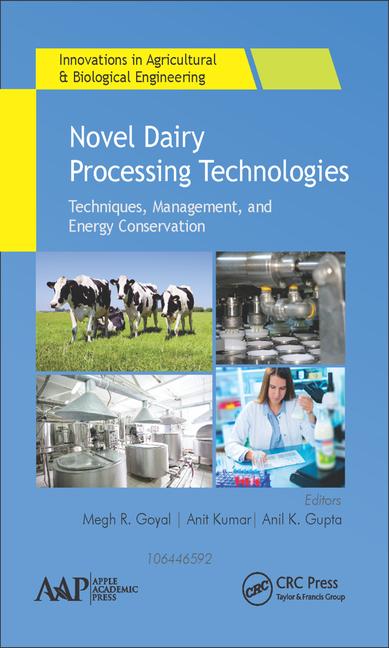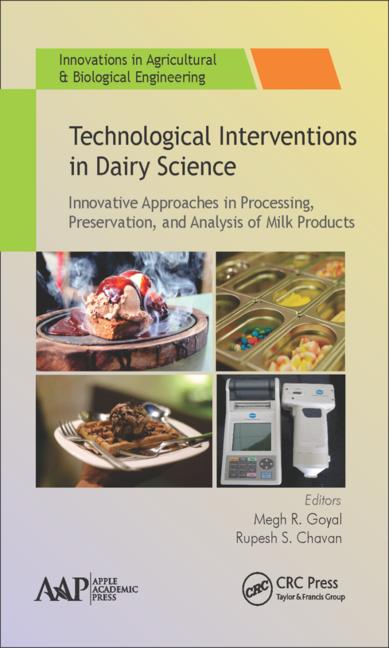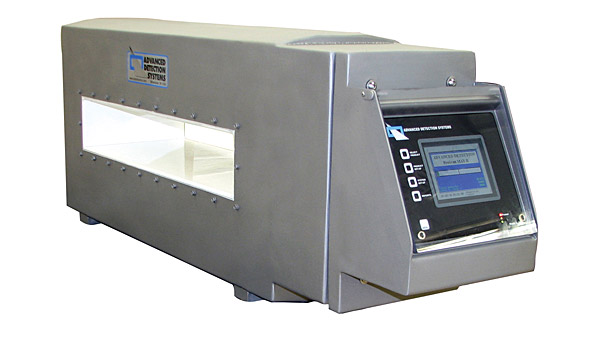Choose the best detection systems for your dairy

Advanced Detection Systems ProScan metal detectors are now IP69K rated. www.adsdetection.com

Anritsu Industrial Solutions’ Dual Energy X-ray system accurately identifies low-density materials. www.detectionperfection.com

FT System’s SDS700-LS is an in-line spoilage detection system for pressurized and hot-filled beverage containers. www.ftsystem.it

Heat and Control’s CEIA THS/MS 21 is ideal for highly sensitive metal detection that eliminates product effect false rejects.

Loma Systems’ Insight Waferthin is a compact metal detector at just 4-inches by 8-inches with a solid stainless steel frame. This system is commonly found in cheese facilities, such as grated or shredded cheese, which is freefalling. www.loma.com

Mettler Toledo Safeline’s Profile Advantage metal detector utilizes the latest multi-simultaneous frequency. www.us.mt.com

Thermo Fisher Scientific upgraded its NextGuard X-ray system with inspection software, which allows users to apply vision tools to X-ray inspection to verify product integrity. www.thermoscientific.com/productinspection

Xavis’ FSCAN-4280DB is a curtainless X-ray machine, which allows no products to get stuck inside. www.xavis.us








We spoke with some leading suppliers about the important role X-ray and metal detection play in food safety and checkweighers’ role in package weight consistency. According to suppliers, dairy processors are facing an increasing list of challenges, including understanding and complying with current government regulations; maintaining a properly trained staff; false rejects; and certification standards to meet. In this article, equipment suppliers talk about best practices and the latest technology in detection systems.
Dairy Foods: Discuss the types of reports your equipment can generate and how dairy processors can use this information to be more efficient manufacturers.
David Smith: Our performance validation feature provides a touchscreen display message at programmable intervals prompting quality assurance staff to pass ferrous, nonferrous and stainless steel test wands through the detector. This procedure confirms the metal detector is performing as required and the action is automatically logged on the metal detector event file, providing documentation that the test procedure was conducted as required by the QA policy.
Tom Tonra: Anritsu has developed our advanced overall quality management and control system, called QuiCCA, to support processors internal QA/QC team. QuiCCA can be configured to retrieve information from a single or multiple systems to one workstation, eliminating errors in manual recording. It can also detect and analyze data to help detect abnormalities and ensure traceability.
John Klinge: The Xtreme’s report capabilities improve efficiency for dairy operations. Its event log captures all system changes, i.e. power on/off, changing new products, changing belt speeds, faults, warnings and operator changes. All actions are logged with a date/time stamp. All major changes are logged with the Xtreme metal detector and saved as a CSV file. Its reject log captures all metal detection events, including when the machine has been tested/validated by system operators. Rejections are also logged with a date/time stamp.
Kelly Sharpe: The Contact Communication software that we offer for the Phantom and Stealth models provides an effective solution for event logging and data collection. It’s ideal for quality assurance record keeping and the collection of valuable information. The software utilizes a powerful SQL back-end to generate adjustable reports on demand. Up to 31 detectors can be monitored with real-time reporting and results can be exported to Excel or PDF formats instantaneously.
Todd Grube: The CEIA 21-Series metal detectors are available with THS Production Plus software which provides statistical data and report generation, all compliant with FDA Title 21 CRF Part 11. The Ishida IX-GA and IX-G2 X-ray inspection systems are available with the iStation Link 2 data collection software. Primary functions include viewing the operating condition of Ishida inspection equipment, error analysis and event traceability.
Laura Studwell: One very common report used in the dairy industry is based on weights. Dairy producers don’t want to give away product, but don’t want to underfill either. By setting thresholds, our software can calculate the cost of giveaway and allow you to adjust your filling machine so as to minimize the cost. Payback from monitoring this type of report is often within weeks.
Doug Pedersen: For users of X-ray who inspect foil lidded or wrapped products, our Raycon system has the capability to review rejected images either in real time or store them for later analysis. Both the GHF metal detector and Raycon feature quick USB saving to allow Quality or Production [departments] to take the information with them.
Rick Cash: Our Versa checkweigher creates detailed reports that include weighed product statistics. These reports also can be customized by the dairy processor. Product weight is a critical aspect of food plant operation. The objective is to ensure fill quality and protect against costly overfill.
Dairy Foods: Your company exhibited at Pack Expo last year. What was on the minds of the dairy processors you spoke with?
Tonra: Dairy processors are facing an ever-increasing list of challenges. Understanding and complying with current government regulations is first and foremost on the list of those challenges. Another of the major challenges is building and maintaining a properly trained staff. We help to alleviate this concern with the design of our multi-lingual, easy-to-use operators interface and our Performa360 process.
Studwell: A common theme among dairy processors is concern regarding which certification standard they should undertake to appease their retailers and their customers. Many of the questions that our team fielded revolved around how our systems meet the protocols set by each individual GFSI-accepted standard.
Geri Foley: False rejects were a main concern. Natural products such as dairy often have a high-degree of moisture content that can vary significantly from one product to another, which may lead to a high false reject rate or to an unacceptable reduction in online sensitivity as operators reduce the system’s sensitivity to limit the false rejects. Our Profile Advantage unit applies a product signal suppression technique to each product that it inspects. Differences in the product signal caused by moisture content are virtually eliminated, which means that the incidence of false triggering is all but eradicated, ensuring maximum sensitivity and productivity is maintained.
Dairy Foods: I’ve noticed that companies are coming out with lower-priced units. Did your company roll out such a product in 2014?
Mark Feher: Mettler’s Hi-Speed did introduce a new case weigher system, the C2325. This system provides great value to the end user without compromising features or performance for simply a low price.
Cash: Our NextGuard X-ray system, which was enhanced in 2014, is priced significantly below more traditional X-ray units. This makes it more economically-feasible for dairy processors to move from metal detection to X-ray inspection.
David Rossman and Scott Hudson: Our FSCAN-3280L unit provides outstanding detection capability for a competitive price point. The 3280L comes UL-listed and has all of the same state-of-the-art software found on our top-of-the-line machines. It’s priced so that companies have the ability to bring X-ray detection into their facilities at a price point just above that of a metal detector.
Dairy Foods: Milk processors typically also produce Grade A foods (like cottage cheese, sour cream and yogurt). Does your company have one machine to use with all categories or does a processor need different machines?
Kelly Sharpe: Different products can require different specifications, so although the actual detector can be the same, the settings and sensitivity parameters would be set specifically per product.
Studwell: We offer a variety of systems that are designed to meet the needs of specific applications. The aperture size in relation to the product has a dramatic effect on detection capability. Therefore, having one system for all application may not be as safe as required by retailers or governing bodies.
Feher: We like to explain to our customers that if they can standardize on one package type and size, we can provide one standard checkweigher that will accommodate all of their needs. Obviously this is not always possible, but it serves to emphasize the need to invest in inspection capital equipment designed and built to meet the specific requirements of the specific application. Packaging is continuously evolving and the best checkweighers are designed specifically for the package type they will be weighing.
Pedersen: We offer customized machines that are specific for dairy applications, be it cottage cheese in a pipe or yogurt cups with a foil lid.
Dairy Foods: What equipment do you have for specific dairy categories?
Tonra: Our X-ray inspection system can check for contaminants and seal integrity on foil-topped yogurt containers, which cannot be done with metal detection alone. Our line of pipe X-ray systems can be used placed between the batching and filling systems to ensure delivery of contaminant free products.
Maribel Rodriguez: Our SDS Spoilage detection system is specific for dairies. According to the different needs of the customers, we will propose the most appropriate solution, be it TDLAS (laser spectroscopy), X-ray, high-frequency, infrared or artificial vision.
Grube: Generally, one CEIA MS21 metal detector can be used for all these products, but different product transport and reject devices must be used for conveyed or pumped foods. CEIA builds specific modular systems that include the metal detector, an integrated reject valve, and controls for different applications. Or we can supply a CEIA metal detector for custom installations. Ishida X-ray systems are available for horizontally conveyed products, plus side-view models for bottle lines.
Studwell: The IQ3+ PipeLine metal detector is used for pre-packaging inspection on liquid or semi-liquid products such as milk, cottage cheese, sour cream or yogurt. Similarly, the Insight Waferthin is used for pre-packaged freefalling product such as shredded or grated cheese. A standard IQ3+ metal detector conveyor system is used for packaged cheese. The X5 X-ray inspection system is often used for packed, sealed product such as milk jugs, yogurt and is often used on cheese wheels to detect the amount and density of the holes.
Feher: Our new C3572 checkweigher, which features a hygienic frame and conveyor design, is tailored specifically for direct food contact. The design will meet USDA dairy requirements for packaging machinery and is ideally suited for the types of environments typically found in dairy packaging lines.
Pedersen: For packaged and consumer products including yogurt, ice cream, butter, cottage cheese, packaged natural and processed cheese we can offer a custom GHF metal detector conveyor system to suit the specifics of the product and the line. We also offer Raycon X-ray technology for foil and metalized packaged products and where advanced inspection such as multizone inspection or product integrity inspection is required.
Dairy Foods: What new technology or features have you incorporated into your equipment?
Smith: Our ProScan metal detectors are now IP69K-rated to provide dairy food processors with metal detection equipment that will withstand the rigors of high-pressure, high-temperature washdown sanitation procedures.
Tonra: The Detection360 process advances quality-control programs by securing all points of detection within the processing environment while reducing risks associated with unwanted contaminants or missing items in the process while increasing efficiencies. The Performa360 program provides continued support in the form of training, service and performance assurance programs.
Klinge: Our new Xtreme metal detector has proven to have exceptional sensitivities when it comes to dairy product processing. Its “dairy settings” minimize the affects of problematic interference from high-salt and high-moisture content inherent in products like cheese wheels (blocks), large containers of cultured product (cottage cheese), etc., ultimately improving the detection of small ferrous, nonferrous and stainless steel contaminants.
Sharpe: We recently introduced a sanitary design for the metal detector systems. This design complies with Wisconsin Dairy and USDA standards for unpackaged dairy applications. The enhanced design and finishes of the metal detector and conveyor ensure the system is easy to clean while eliminating the potential for bacteria traps.
Grube: For highly sensitive metal detection that eliminates product effect false rejects, the CEIA THS/MS 21 is available with an integrated ejection valve for pumped products like milk and ice cream. These metal detectors are also available for conveyed and fall-through products. CEIA’s unique multi-spectrum technology simultaneously and continuously uses a broad spectrum of frequencies to detect smaller metal particles. Processors using this system for bulk pumped ice cream detect contaminant diameters as small as 0.5 millimeters (ferrous), 0.7 millimeters (non-ferrous), and 1.0 millimeters (316 stainless steel).
Studwell: We launched ATEX21, an explosion-proof metal detector and redesigned the frame of our X5 X-ray system with rounded, sloping surfaces to prevent collection of waste particles. The cabinet is fully sealed and the conveyor can be pulled out in a few seconds for a thorough washdown. We also enhanced the compact Insight Waferthin metal detector to a solid stainless steel frame.
Foley: The Profile Advantage metal detector, utilizes the latest multisimultaneous frequency. This technology incorporates a product signal suppression technique to effectively cancel out the product signal from difficult-to-inspect high-moisture content products such as cheese.
Feher: Our ProdX Inspect is a software product that can connect all Mettler Toledo inspection equipment, checkweighers, metal detectors and X-ray to a single application and offers complete oversight and control of these inspection devices and systems.
Pedersen: We added more software to the capabilities of the Raycon X-ray. Multiproduct, chaotic product and multilane software features are now standard. For the dairy industry, this allows for maximum flexibility and ease-of-use, be it a multilane yogurt cup filling line or a line with a lot of fast changeovers. Products are automatically learned and detection performance for all metals, glass, stone, natural rubber and other dense materials is optimized without the need for a high-degree of operator skill or interface with the machine. The Raycon can, for multicell products such as a crate of yogurt, inspect each area independently, including measuring of the fill level in each cell.
Rick Cash: We added inspection software to our NextGuard X-ray system. It allows users to apply vision tools to X-ray inspection to verify product integrity. A dairy foods example is inspecting novelties to ensure that the ice cream is formed correctly and the stick is present.
Rossman and Hudson: Our Xavis FSCAN-4280DB features a design where X-ray leakage is less than .1 µSv / hour. The 4280DB works especially well for the dairy industry because it is a curtainless machine, so no products can get stuck inside. The absence of curtains also allows for easy cleaning and with IP-66 and HACCP certifications.
Use the Dairy Foods Buyers Guide (July 2014 issue or buyersguide.dairyfoods.com/buyersguide) to find more suppliers of inspection equipment.
Meet the panel
Looking for a reprint of this article?
From high-res PDFs to custom plaques, order your copy today!




